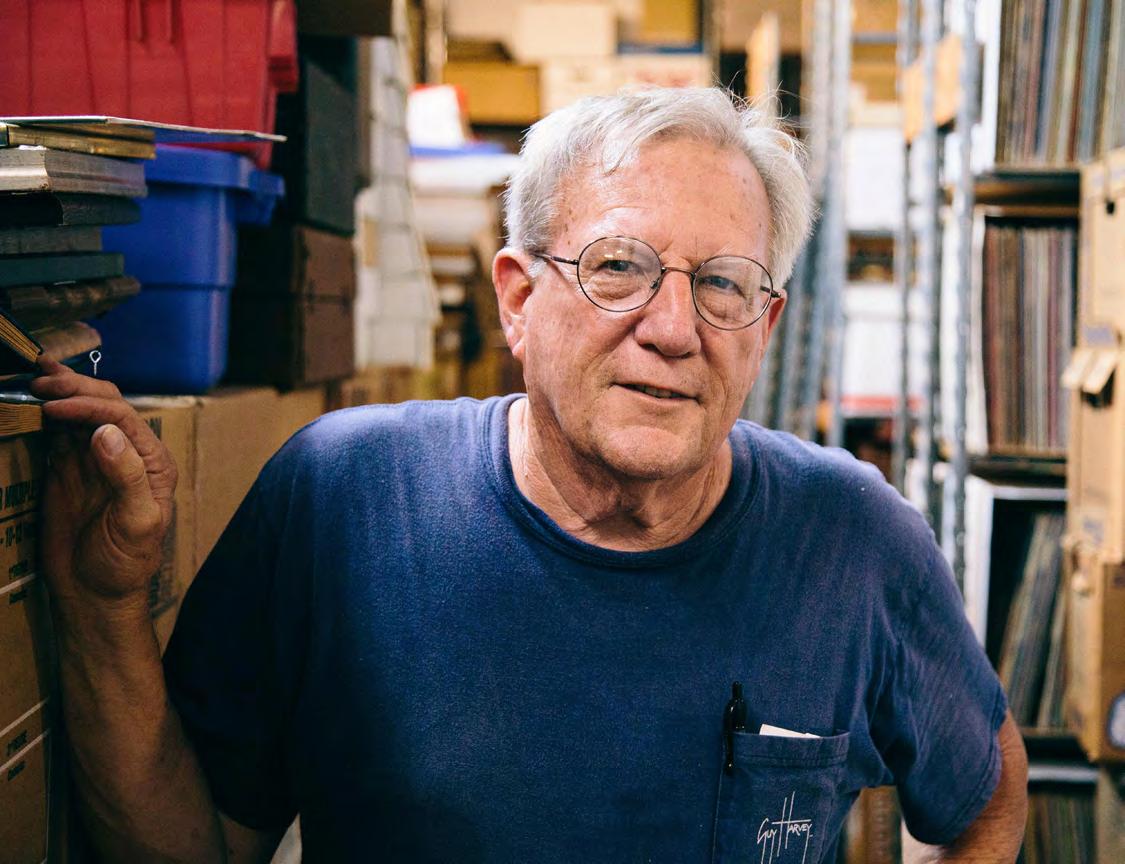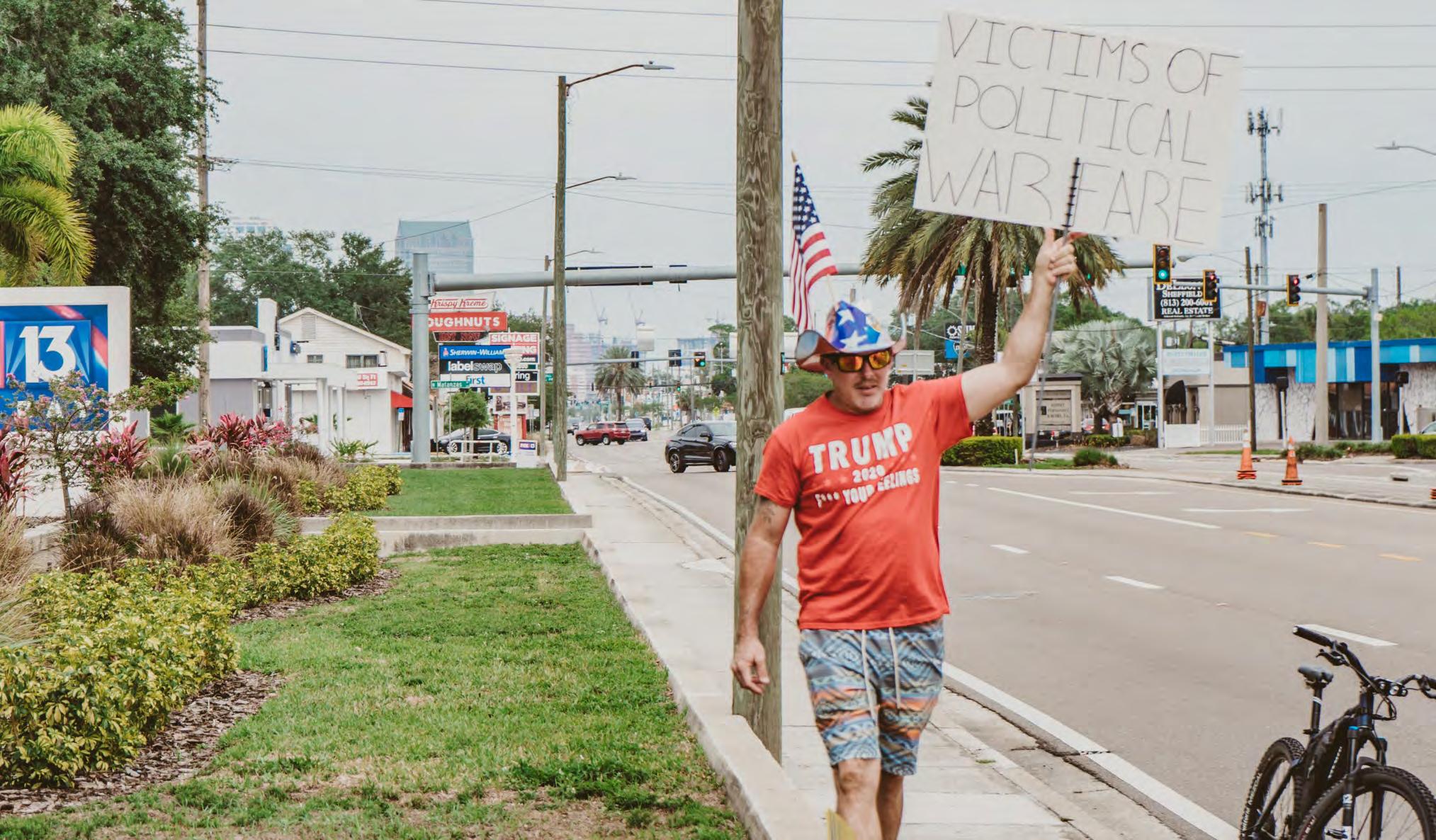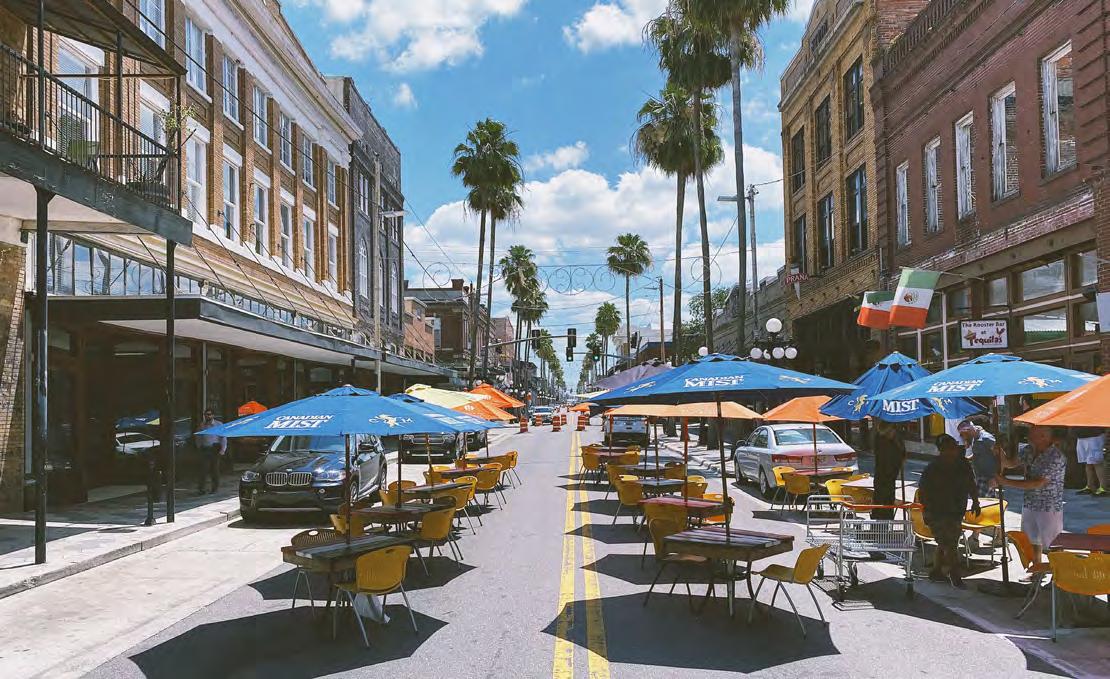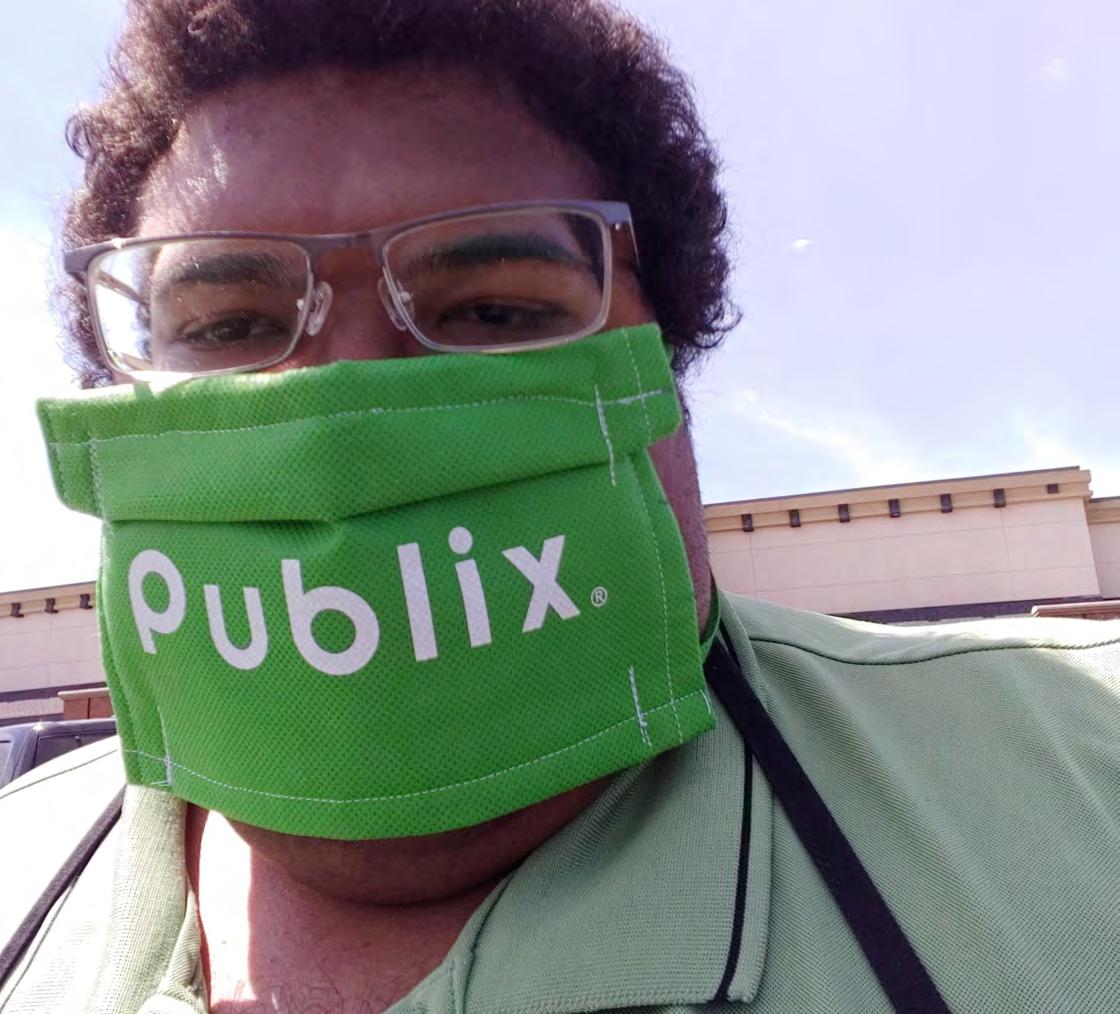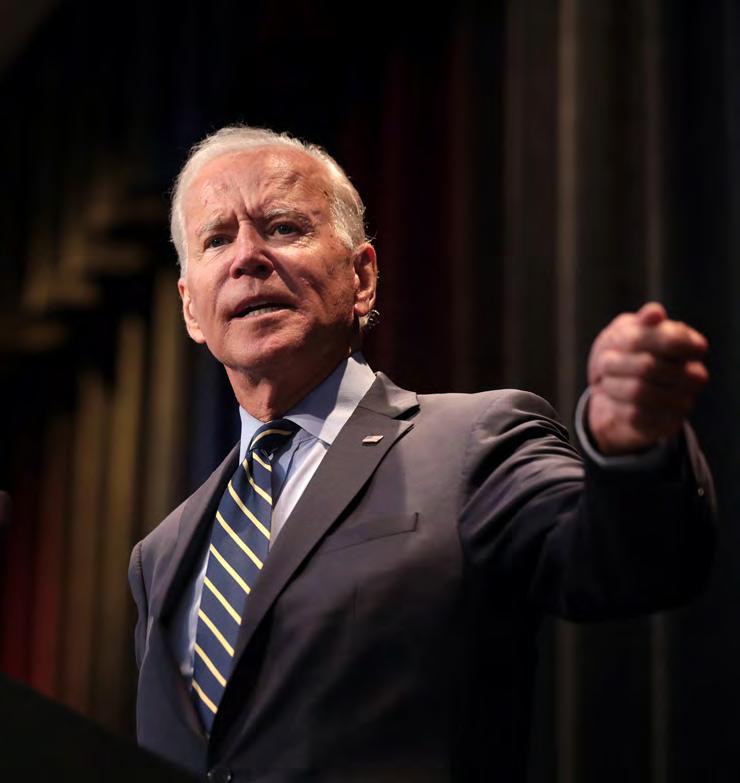MICHAEL JOHNSON
RESTAURANTS
RECIPES
DINING GUIDES
Just a taste
Local restaurants wade into DeSantis’ phase one opening.
By Ray Roa
I
t’s happening. For better or worse, Tampa Bay is coming out of its cage. Will we end up doing just fine? That’s up in the air along with the collective throat particles of people who’ve been presumably cooped up and social distancing like good little citizens for the last seven weeks. On Monday, the City of Tampa opened more than a dozen parks and dog parks, plus four beaches. Pinellas beaches were back open, too, but Sheriff Bob Gualtieri said deputies had to close Pass-a-Grille beach to nonresidents due to capacity. And while a healthy number of restaurants and cafés—like King State coffee in Tampa Heights, the Columbia Restaurant Group’s Goody Goody, and Res Mesa—are opting to stick with takeout and delivery while keeping their dining rooms closed, many have decided to go with Gov. Ron DeSantis’ phase one reopening plan which says they may operate at 25% capacity indoors, with six-feet of space between tables outdoors. “I want to be clear that the state’s order does not require restaurants and retail establishments to open on Monday, it simply permits them to do so if they choose to do so,” St. Petersburg Mayor Rick Kriseman wrote, adding that retail establishments that were previously closed may also reopen on Monday at 25% occupancy. His reading of the recent order is that localities cannot expand the governor’s restrictions, only further restrict them. “I will not do that in this instance,” Kriseman added. On Monday, during an appearance on the “Midpoint” news show on community radio station WMNF 88.5-FM, Kriseman said the City of St. Petersburg was looking at ways for restaurateurs to increase outdoor capacity so that restaurants could have a better shot at paying rent with just a fraction of their usual business. Across the bridge in Tampa, Mayor Jane Castor was already doing that very thing with her Lift Up Local Economy Recovery Plan, which lets restaurants and retail stores legally expand onto public rights-of-way and private parking areas without a city permit. “Street activation zones”—including parts of downtown and Tampa
12 | MAY 7-13, 2020 | cltampa.com
ORDER UP: You can finally have that literally-on-7th Avenue dining experience.
Heights’ Franklin Street, Swann Avenue and S. Dakota Avenue in South Tampa, Grand Central Avenue in the West River district and Seventh Avenue in Ybor City—are also closed 24-7 while parts of S. Howard Ave. are closed from 5 p.m.-10 p.m. Face masks are required for front-of-house staff, along with disposable paper menus and reduced table-to-waitstaff contact (so don’t hop on fucking Yelp when your water is topped off right when you want it to be, OK?). It’s not required by the plan, but the city is strongly encouraging restaurants to test employees and implement contactless ordering and payment. Critics of DeSantis’ move say it makes it look like the governor is doing what he can to kickstart the flailing economy while taking attention off an abysmal unemployment system that was widely panned as the worst in the nation. What’s more is that scores of small businesses have been left out of the federal government’s Payment Protection Plan and Economic Injury Disaster Loan emergency advance programs. On Tuesday, WFTS looked at accounting records and reported that Florida’s unemployment fund earned nearly $25 million in interest in the first three months of this year—more in interest on its largely untapped unemployment fund than any other state. A spokesperson for the Florida Department of Economic Activity (DEO) told the station, “In March, we did receive money faster than we could distribute it, which is why there was a minor increase in the Trust Fund.”
An unemployment insurance expert with the National Employment Law Project added that Florida is “unemployment insurance expert with the National Employment Law Project.” And while both Hillsborough and Pinellas have made testing more widely available in the last 10 days, at the time of this writing, state has still only tested less than 2% of its population. Experts say that massive numbers of tests are required in order to properly screen a community to determine the scope of the virus. Plus, anyone who tests positive must be tested more than once to confirm if they have recovered. “According to Dr. Lockwood from the USF medical school, we need to have 2,240 tests a day,” Castor told WMNF on the same “Midpoint” program, citing Dr. Charles Lockwood, the dean of the University of South Florida’s College of Medicine. “We’re a ways away from that but we’re trying to get more and more and more testing done. One to get an accurate picture of the virus in our community but also as we start to open up to ensure that we’ll be able to identify any surges.” Still, given the data available, it’s hard to argue that Tampa Bay hasn’t flattened its curve. Local safer-at-home orders have a lot to do with that; for the most part, citizens abided, but on Tuesday, the state recorded 113 new deaths from the coronavirus, including 11 in Tampa Bay. The state figure is a record, and it’s the first time Florida reported 100 deaths in a single day. Castor told WMNF that coronavirus cases
FOOD NEWS
would increase after this first phase of reopening. She and Kriseman said their counties are committed to finding an effective method of contact tracing, which requires public health workers to work with COVID-19 patients in recalling everyone whom they’ve had close contact with while they may have been infectious. The workers then warn those contacts of their potential exposure as rapidly and sensitively as possible. The Centers for Disease Control and Prevention (CDC) says, “To protect patient privacy, contacts are only informed that they may have been exposed to a patient with the infection. They are not told the identity of the patient who may have exposed them.” The mayor also said that syndromic surveillance—where positive test results are placed on a map—will be utilized along with results from a survey Hillsborough County is asking residents to complete. “We will map those results as well and it will ask them if they have any symptoms, signs, those kinds of things,” Castor added. “So through that mapping system we should be able to identify hotspots as they pop up and go out and address them immediately as opposed to allowing it to spread and present itself at the hospital when it’s too late.” Castor respects what she called DeSantis’ “thoughtful” and “very, very gradual” opening because it’s grounded in available data; she believes its slow pace will give her the option to ratchet the opening back quickly in the event of an uptick in cases.

